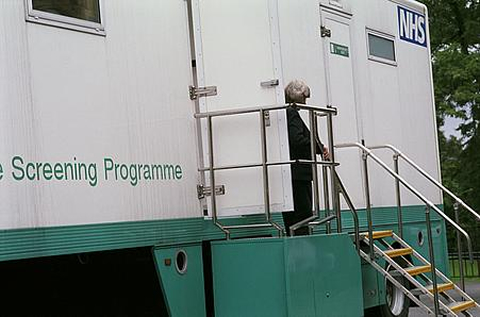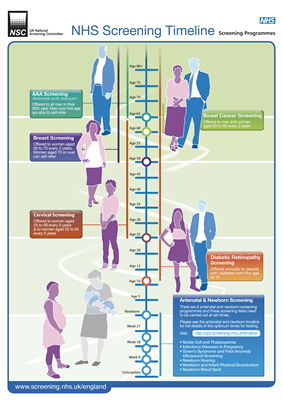Overview and Principles of Screening course for General Practitioners



This session provides an overview of the principles and practice of screening, clarifying relevant terms and detailing the concept of informed choice.
Learning Objectives
By the end of this session you will be able to:
- Define and distinguish between the key terms of screening, testing and diagnosis
- Define the components of a screening programme
- Explain the measures used to assess the effectiveness of a screening test
- Explain the importance of patient or parent information in facilitating informed screening choices
Screening is now part of mainstream NHS and public health services. Over the past decade six antenatal and newborn, and two adult screening programmes have been implemented. There are also the established cancer screening programmes, offered to adults.
Healthcare professionals need to know what is offered, when it should be offered and the possible outcomes, in order to offer patients evidence-based care and informed choices.
Jo Harcombe [MA, BA (Hons), DPSM, RM, RN] is currently the National Education Lead to the UK NSC screening programmes (England). This role covers the non-cancer screening programmes for England and ensures delivery of a cross-programme, multidisciplinary education strategy that supports NHS staff, commissioners and education institutes. Jo chairs several groups across the UK NSC and is a representative for the UK NSC across several organisations and stakeholder groups.
Prior to commencing this role Jo worked as a clinical midwife and senior lecturer in midwifery and women’s health and led several education projects related to clinical governance/risk management. Jo started working for the UK NSC in 2001 as a Regional Screening Coordinator for the North East region, and took on the education remit in 2002 part-time and full-time in 2004.
Jo’s Masters Degree is in Educational Leadership and her dissertation explored the use of ‘distributed leadership’ in the NHS as a means of securing sustainable professional education for screening.


- The Returning Traveller course for GPs
- Posted By eIntegrity Healthcare e-Learning
- Posted Date: 2024-07-27
- Location:Online
- This session is the third in a series of sessions about travel advice for patients and provides a br...
- Malaria course for GPs
- Posted By eIntegrity Healthcare e-Learning
- Posted Date: 2024-07-27
- Location:Online
- This session will help GPs to provide balanced, safe and sensible advice to patients travelling to m...
- Pre-Travel Advice course for GPs
- Posted By eIntegrity Healthcare e-Learning
- Posted Date: 2024-07-27
- Location:Online
- This session is the first in a series of sessions about travel advice for patients and provides a br...
- Guiding and Enabling Behaviour Change course for G...
- Posted By eIntegrity Healthcare e-Learning
- Posted Date: 2024-07-27
- Location:Online
- This session aims to equip you with the knowledge and understanding of how to take a guiding and col...
- Managing Obesity: Supporting Behaviour Change cour...
- Posted By eIntegrity Healthcare e-Learning
- Posted Date: 2024-07-27
- Location:Online
- This session looks at the type of support and services that can be offered for both children and adu...









